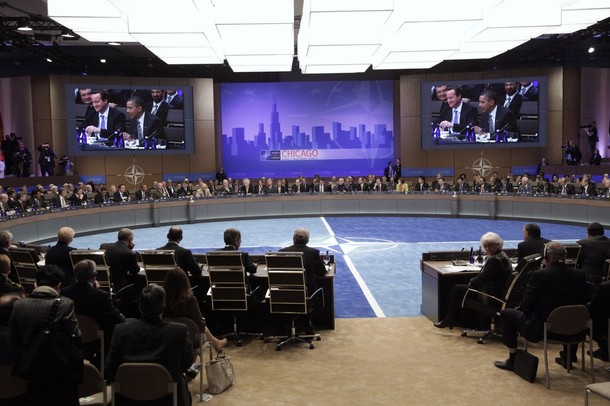
As the U.S. Congress begins to trim the U.S. defense budget it should re-examine the structure of NATO and insist that the alliance’s bureaucracy reflect today’s geopolitical realities, not those prevailing at the end of World War II.
It is easy to forget that it is the North Atlantic Treaty signed in 1949 that ties America to the defense of Europe. The alliance’s staff and bureaucracy, the “O” that transformed the NAT into NATO — was designed over the following year. This “O” was tailored to the realities of that age: a belligerent Soviet Union bent on dominating a Europe whose countries lay shattered as a result of the world war that had just ended. And a recognition that the United States alone had the industrial and economic might to oppose the Soviets.
The result was a transatlantic security alliance in which the United States, in return for paying for Europe’s defense, assumed the leadership of NATO.
Today, thanks to European enterprise and NATO’s security umbrella, the shattered European states have transformed themselves into the European Union; the Soviet Union disappeared 20 years ago; and Europe now faces no real threat of any significance. But NATO’s organization remains as it was in 1949.
The result of this archaic arrangement is an inefficient and free-riding European defense establishment that still counts on the American cavalry coming to its rescue. In the 2011 Libyan campaign, for example, the EU was unable to take-on Gaddafi’s third-rate military machine without American assistance, at a cost to the U.S. taxpayer of over a billion dollars.
The weak state of the EU’s defense capabilities does not reflect inadequate military spending. Even after recent cutbacks the total defense budget of the EU states is around $280 billion — close to what the U.S. defense budget was prior to 9/11. It is a lot of money, especially considering that, unlike America, the EU has no interest in policing the world.
The real problem is that the money is not spent wisely. The 27 EU countries still pay for multiple armies, navies, air forces, redundant weapons procurement programs, manufacturing facilities, and military academies.
As Americans know only too well, eliminating redundant or obsolete weapons programs or bases is monumentally difficult because of political opposition to consolidating defense jobs. It is doubly difficult for European politicians to make these decisions when they have an American defense credit card in their pockets.
It is not that the Europeans have not recognized the need for an EU defense establishment. The EU set up its Common Security and Defense Policy in 1998 and has used it over the last decade to deploy 27 civilian and military missions from Asia to Africa. However, internal EU disputes and objections by the United States to an autonomous European military establishment that might compete with NATO and American leadership in Europe have hindered CSDP’s development.
What should be done to rectify this state of affairs? Here is my two cents worth:
As part of trimming the U.S. defense budget Congress should insist that within 3-5 years the responsibility for the defense of Europe and its periphery be transferred to the EU. Specifically,
- America should turn over the leadership of NATO to the EU by replacing Americans with Europeans in key NATO positions throughout the Alliance.
- NATO’s operations and planning division (Allied Command Operations/SHAPE) should be merged into CSDP and serve as the EU’s planning, command, and control staff.
- NATO’s board of directors, the North Atlantic Council (NAC), made up of ambassadors and their staffs from the alliance’s 28 members is no longer fit for purpose. It assumes a non-EU Europe of separate countries, and being primarily a military structure, cannot forge the political consensus to streamline Europe’s military-industrial complex. The NAC should be recast to include one representative each from the EU, United States, Canada, and non-EU members of NATO such as Turkey. It should also be re-missioned to serve as a security bridge across the Atlantic in case of a conflict that requires a combined European-North American response. Such as the recent alliance decision to deploy Patriot missiles to defend Turkey from Syria.
- NATO’s third entity, Allied Command Transformation or ACT, located in Norfolk, Virginia largely duplicates the functions of the EU’s European Defense Agency and should be merged with it.
- Finally, America should take the initiative for this transformation and push the transatlantic allies to set up a high level task-force to redesign the structure of NATO.
The North Atlantic Treaty continues to serve a valuable purpose. It is the “O” in NATO that needs an upgrade. Congress should make this a high American priority in 2013.
Sarwar Kashmeri is a senior fellow with the Atlantic Council’s Brent Scowcroft Center on International Security. This piece was originally featured in The Huffington Post.
Image: NATO%20summit%202012.jpg
